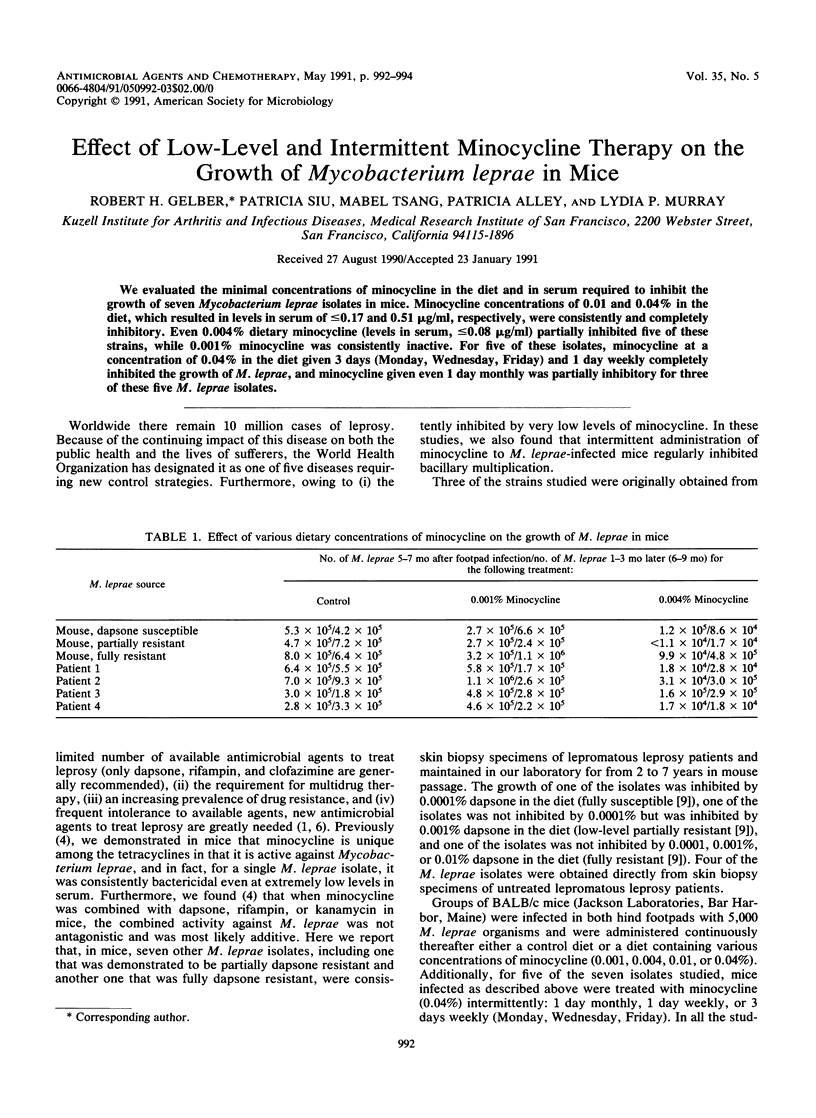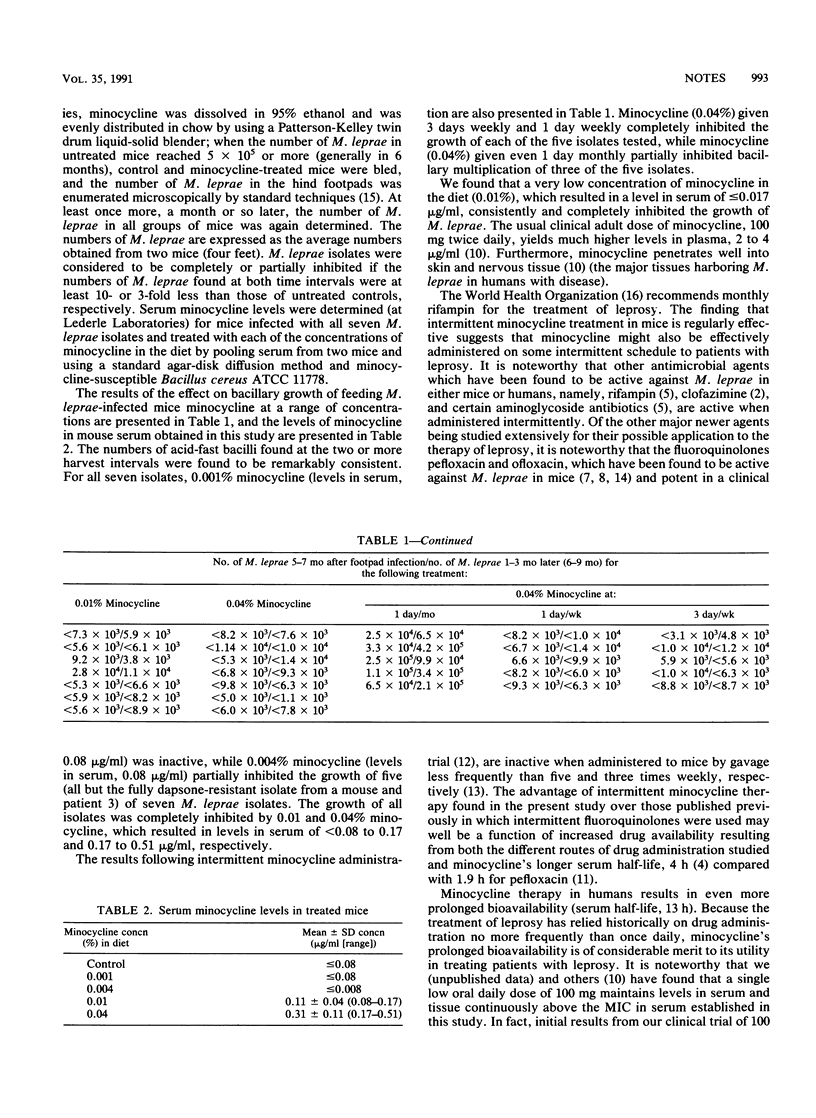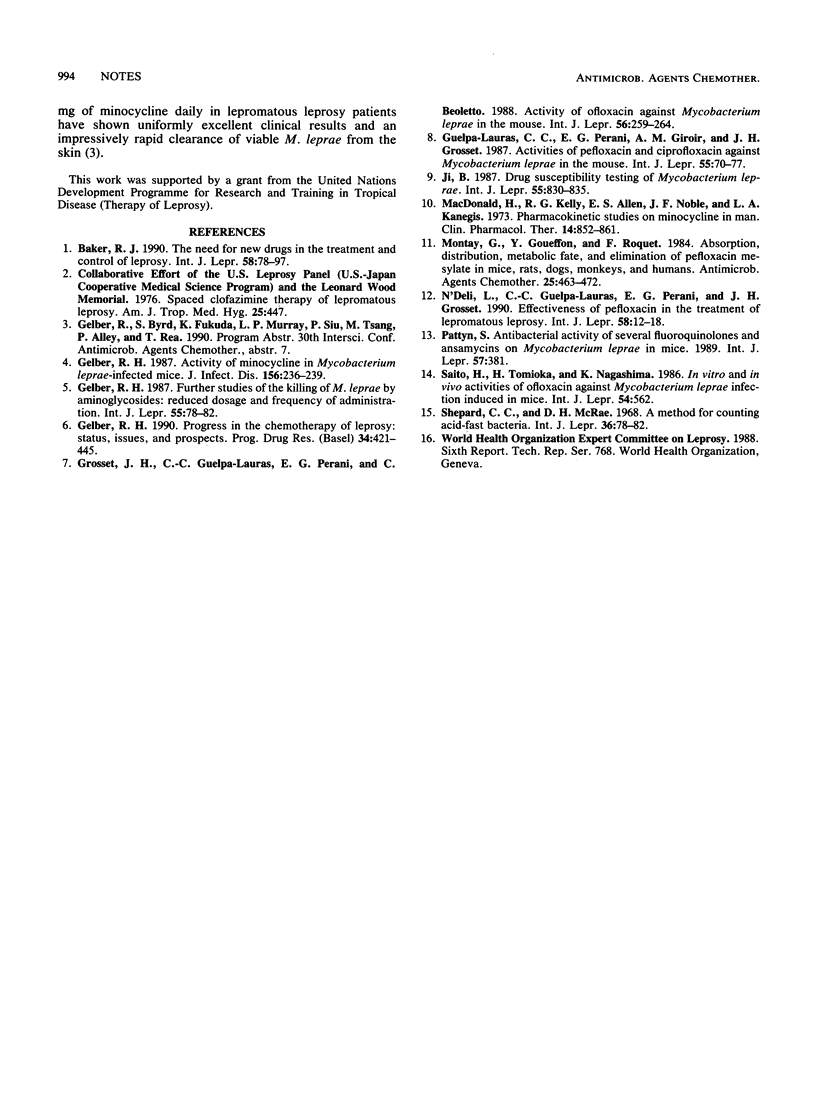Abstract
We evaluated the minimal concentrations of minocycline in the diet and in serum required to inhibit the growth of seven Mycobacterium leprae isolates in mice. Minocycline concentrations of 0.01 and 0.04% in the diet, which resulted in levels in serum of less than or equal to 0.17 and 0.51 microgram/ml, respectively, were consistently and completely inhibitory. Even 0.004% dietary minocycline (levels in serum, less than or equal to 0.08 microgram/ml) partially inhibited five of these strains, while 0.001% minocycline was consistently inactive. For five of these isolates, minocycline at a concentration of 0.04% in the diet given 3 days (Monday, Wednesday, Friday) and 1 day weekly completely inhibited the growth of M. leprae, and minocycline given even 1 day monthly was partially inhibitory for three of these five M. leprae isolates.
Full text
PDF


Selected References
These references are in PubMed. This may not be the complete list of references from this article.
- Baker R. J. The need for new drugs in the treatment and control of leprosy. Int J Lepr Other Mycobact Dis. 1990 Mar;58(1):78–97. [PubMed] [Google Scholar]
- Gelber R. H. Activity of minocycline in Mycobacterium leprae-infected mice. J Infect Dis. 1987 Jul;156(1):236–239. doi: 10.1093/infdis/156.1.236. [DOI] [PubMed] [Google Scholar]
- Gelber R. H. Further studies of the killing of M. leprae by aminoglycosides: reduced dosage and frequency of administration. Int J Lepr Other Mycobact Dis. 1987 Mar;55(1):78–82. [PubMed] [Google Scholar]
- Gelber R. H. Progress in the chemotherapy of leprosy: status, issues and prospects. Prog Drug Res. 1990;34:421–445. doi: 10.1007/978-3-0348-7128-0_14. [DOI] [PubMed] [Google Scholar]
- Grosset J. H., Guelpa-Lauras C. C., Perani E. G., Beoletto C. Activity of ofloxacin against Mycobacterium leprae in the mouse. Int J Lepr Other Mycobact Dis. 1988 Jun;56(2):259–264. [PubMed] [Google Scholar]
- Guelpa-Lauras C. C., Perani E. G., Giroir A. M., Grosset J. H. Activities of pefloxacin and ciprofloxacin against Mycobacterium leprae in the mouse. Int J Lepr Other Mycobact Dis. 1987 Mar;55(1):70–77. [PubMed] [Google Scholar]
- Macdonald H., Kelly R. G., Allen E. S., Noble J. F., Kanegis L. A. Pharmacokinetic studies on minocycline in man. Clin Pharmacol Ther. 1973 Sep-Oct;14(5):852–861. doi: 10.1002/cpt1973145852. [DOI] [PubMed] [Google Scholar]
- Montay G., Goueffon Y., Roquet F. Absorption, distribution, metabolic fate, and elimination of pefloxacin mesylate in mice, rats, dogs, monkeys, and humans. Antimicrob Agents Chemother. 1984 Apr;25(4):463–472. doi: 10.1128/aac.25.4.463. [DOI] [PMC free article] [PubMed] [Google Scholar]
- N'Deli L., Guelpa-Lauras C. C., Perani E. G., Grosset J. H. Effectiveness of pefloxacin in the treatment of lepromatous leprosy. Int J Lepr Other Mycobact Dis. 1990 Mar;58(1):12–18. [PubMed] [Google Scholar]
- Saito H., Tomioka H., Nagashima K. In vitro and in vivo activities of ofloxacin against Mycobacterium leprae infection induced in mice. Int J Lepr Other Mycobact Dis. 1986 Dec;54(4):560–562. [PubMed] [Google Scholar]
- Shepard C. C., McRae D. H. A method for counting acid-fast bacteria. Int J Lepr Other Mycobact Dis. 1968 Jan-Mar;36(1):78–82. [PubMed] [Google Scholar]


